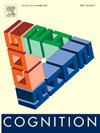Visual search is relational without prior context learning
IF 2.8
1区 心理学
Q1 PSYCHOLOGY, EXPERIMENTAL
引用次数: 0
Abstract
The most prominent models of visual attention assume that we tune attention to the specific feature value of a sought-after object (e.g., a specific colour or orientation) to aid search. However, subsequent research has shown that attention is often tuned to the relative feature of the target, that the target has in relation to other items in the surround (e.g., redder/greener, darker/lighter, larger/smaller), in line with a Relational Account of Attention. Previous research is still limited though, as it used repeated-target designs and relatively sparse displays. With this, it is still unknown whether we can indeed tune attention to relative features prior to the first eye movement, or whether this requires context knowledge gained from experience. Moreover, it is unclear how search progresses from one item to the next. The present study tested these questions in a 36-item search display with multiple distractors and variable target and non-target colours. The first fixations on a trial showed that these displays still reliably evoked relational search, even when observers had no knowledge of the context. Moreover, the first five fixations within a trial showed that we tend to select the most extreme items first, followed by the next-extreme, until the target is found, in line with the relational account. These findings show that information about the relative target feature can be rapidly extracted and is used to guide attention in the first fixation(s) of search, whereby attention only hones in on the target colour after multiple fixations on relatively more extreme distractors.
视觉搜索是关系的,没有事先的上下文学习
最突出的视觉注意模型假设我们将注意力调整到所追求对象的特定特征值(例如,特定的颜色或方向)以帮助搜索。然而,随后的研究表明,注意力通常会被转移到目标的相对特征上,即目标与周围其他物品的相对特征(例如,更红/更绿,更暗/更亮,更大/更小),这与注意力的关系解释一致。先前的研究仍然有限,因为它使用了重复目标设计和相对稀疏的显示。有了这个,我们是否真的可以在第一次眼球运动之前将注意力调整到相关特征上,或者这是否需要从经验中获得的背景知识,这仍然是未知的。此外,从一个项目到下一个项目的搜索过程也不清楚。本研究在一个36项搜索显示中测试了这些问题,该搜索显示具有多个干扰因素和可变目标和非目标颜色。实验中的第一次注视表明,即使在观察者不了解情境的情况下,这些展示仍然可靠地引发了关系搜索。此外,试验中的前五个固定表明,我们倾向于首先选择最极端的物品,然后是下一个极端,直到找到目标,这与关系解释一致。这些发现表明,关于相对目标特征的信息可以被快速提取出来,并用于指导人们在搜索的第一次注视时的注意力,而只有在多次注视相对更极端的干扰物后,注意力才会集中在目标颜色上。
本文章由计算机程序翻译,如有差异,请以英文原文为准。
求助全文
约1分钟内获得全文
求助全文
来源期刊

Cognition
PSYCHOLOGY, EXPERIMENTAL-
CiteScore
6.40
自引率
5.90%
发文量
283
期刊介绍:
Cognition is an international journal that publishes theoretical and experimental papers on the study of the mind. It covers a wide variety of subjects concerning all the different aspects of cognition, ranging from biological and experimental studies to formal analysis. Contributions from the fields of psychology, neuroscience, linguistics, computer science, mathematics, ethology and philosophy are welcome in this journal provided that they have some bearing on the functioning of the mind. In addition, the journal serves as a forum for discussion of social and political aspects of cognitive science.
 求助内容:
求助内容: 应助结果提醒方式:
应助结果提醒方式:


